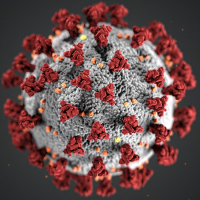
What are the effects of obesity on COVID-19 outcomes?
Key messages
• There is enough evidence to support the finding that extreme obesity (BMI > 40 kg/m2) increases the chance of a person dying, requiring a breathing tube, being hospitalised, and being admitted to the ICU due to COVID-19.
• Obesity in general will result in a person requiring a breathing tube.
• The higher one's BMI gets, the higher the chance that a person will suffer from severe COVID-19 disease.
What is obesity?
Obesity is defined as abnormal or excessive fat accumulation in different parts of the human body and it presents a risk to health. To assess obesity, different indices such as body mass index (BMI) can be used, which is one's weight in kilograms divided by the square of height in metres. The WHO has classified obesity into three classes. According to this classification, class I obesity includes a BMI ranging from 30 to 35 kg/m2, class II from 35 to 40 kg/m2, and class III from 40 kg/m2 and more. Read more here.
See the full Review on the Cochrane Library
